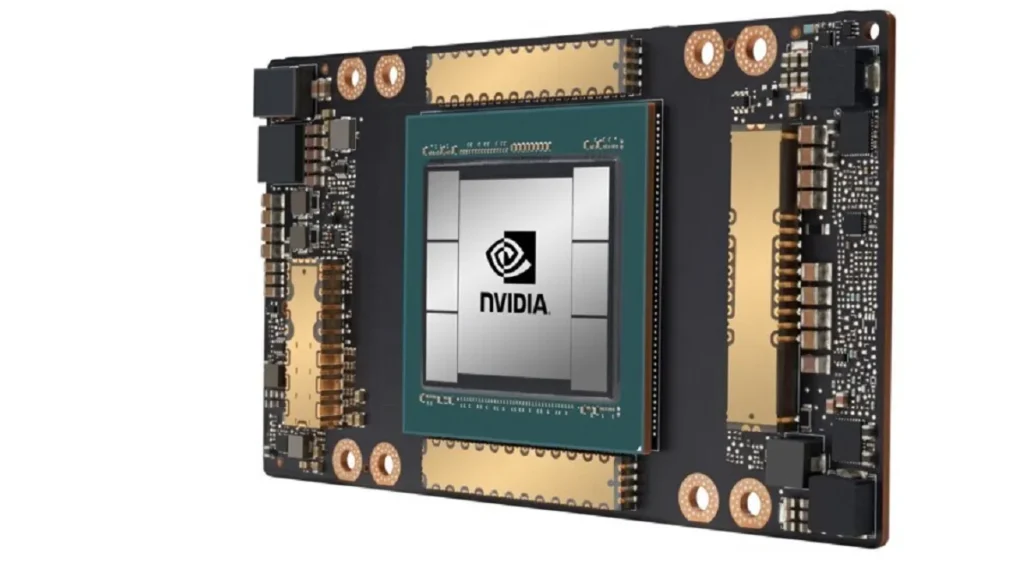Hey there, tech enthusiasts! Today, we’re delving into the fascinating world of AI chips, with a spotlight on NVIDIA’s groundbreaking contributions. As an expert in NVIDIA chips, I’m thrilled to guide you through the ins and outs of these technological marvels and shed light on how they stack up against the competition.
NVIDIA AI Chip: The Engine of Intelligent Computing

Let’s kick things off by understanding what sets NVIDIA AI chips apart. NVIDIA has been a trailblazer in the realm of artificial intelligence, crafting chips specifically designed to accelerate AI workloads with remarkable efficiency. These chips are not your run-of-the-mill processors; they’re tailored to tackle complex tasks like deep learning, data analytics, and scientific computing at lightning speed.
Intel AI Chip vs. NVIDIA: A Clash of Titans
One of the most common comparisons in the tech world is between Intel and NVIDIA AI chips. While both giants offer formidable solutions, they cater to slightly different needs. Intel chips are renowned for their versatility and widespread use across various applications. However, when it comes to sheer AI processing power, NVIDIA takes the lead with its dedicated architecture optimized for deep learning tasks.
| Feature | Intel AI Chip | NVIDIA AI Chip |
|---|---|---|
| AI Performance | Versatile, but slightly lagging behind NVIDIA in AI tasks | Optimized architecture for AI, leading in AI processing |
| Power Efficiency | Competitive, but NVIDIA’s focus on AI yields better efficiency | Specialized design leads to superior power efficiency |
| Customization | Offers flexibility for various applications | Tailored specifically for AI workloads, offering focused performance |
AMD AI Chip vs. NVIDIA: The Battle for Supremacy
Now, let’s turn our attention to AMD. With its impressive strides in the CPU and GPU market, AMD has also ventured into AI chips. The AMD MI300 certainly packs a punch, but does it measure up to NVIDIA’s offerings? While AMD’s chip brings formidable computational capabilities to the table, NVIDIA’s H100 stands out with its specialized architecture tailored specifically for AI workloads. It’s a close competition, but NVIDIA’s laser focus on AI gives it a slight edge.
| Feature | AMD MI300 | NVIDIA H100 |
|---|---|---|
| AI Performance | Powerful, but NVIDIA’s specialized architecture offers an edge | Leading in AI processing with optimized architecture |
| Power Efficiency | Competitive, but NVIDIA’s focused design yields superior efficiency | Specialized architecture leads to better power efficiency |
| Versatility | Broad applicability across various tasks | Tailored specifically for AI, offering focused performance |
Who Makes NVIDIA AI Chips?
You might be wondering who’s behind the magic of NVIDIA AI chips. Well, NVIDIA designs and manufactures its chips in-house, leveraging decades of expertise in graphics processing to push the boundaries of AI computing. This vertical integration allows NVIDIA to fine-tune every aspect of their chips for maximum performance and efficiency.
AMD MI300 vs. NVIDIA H100: The Showdown

Lastly, let’s pit two titans against each other: the AMD MI300 and the NVIDIA H100. Both chips offer formidable AI capabilities, but they approach the task from slightly different angles. The MI300 boasts impressive general-purpose computing prowess, while the H100 excels in AI-specific workloads thanks to its specialized architecture. Choosing between them ultimately depends on the specific requirements of your applications.
| Feature | AMD MI300 | NVIDIA H100 |
|---|---|---|
| AI Performance | Powerful, but NVIDIA’s specialized architecture offers an edge | Leading in AI processing with optimized architecture |
| Power Efficiency | Competitive, but NVIDIA’s focused design yields superior efficiency | Specialized architecture leads to better power efficiency |
| Versatility | Broad applicability across various tasks | Tailored specifically for AI, offering focused performance |
In conclusion, NVIDIA AI chips represent the pinnacle of intelligent computing, powering advancements in AI research, autonomous vehicles, healthcare, and more. While competitors like Intel and AMD offer formidable alternatives, NVIDIA’s relentless pursuit of AI excellence sets it apart in the ever-evolving landscape of technology.
So, whether you’re a seasoned developer, a curious enthusiast, or simply someone intrigued by the future of computing, keep an eye on NVIDIA AI chips—they’re shaping the world as we know it, one computation at a time.

